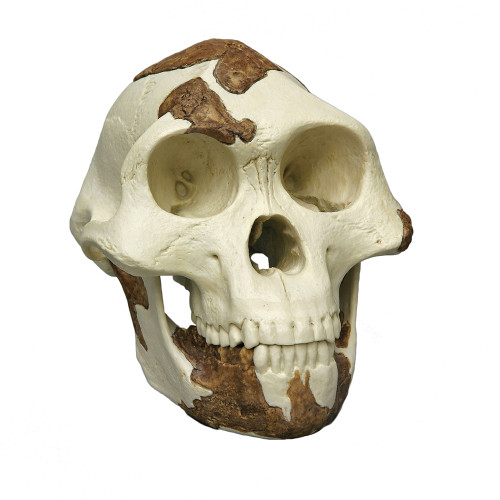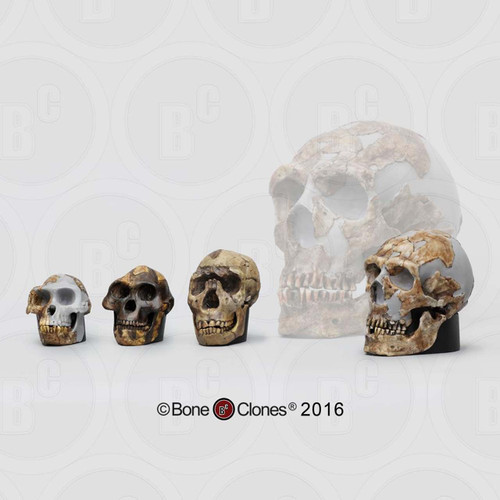Australopithecus afarensis skull "Lucy", dark finish, (3.2 million years).
The Australopithecus afarensis skull "Lucy" was discovered by D. Johanson in 1974 in Hadar, Ethiopia.
Several branches of the hominid evolutionary tree that began between 2 and 3 MYA stemmed from "Lucy's" species.
Although the short stature of this female, only 107cm, suggests that she was immature, eruption of the third molar provides evidence that this specimen was mature, and was simply a female representative of a sexually dimorphic species.
The jaw shares features with both apes and other early hominids, with the shape showing some similarities to apes, with relatively large front teeth and parallel-sided tooth rows, and the size of the canine teeth being intermediate between apes and hominids who lived later.
The cheek teeth are intermediate in size between hominids who lived earlier and those who lived later.
The brain of "Lucy" was relatively small and overlapped in size with living apes.
However, the shape of the pelvis, along with other characteristics of the postcranial skeleton, indicates that "Lucy" walked upright.
At the same time, other characteristics of the limb skeleton indicate that members of this species spent time in the trees.
This combination of an ape-sized brain in a hominid adapted to upright walking adds to the evidence that bipedalism occurred before the development of a relatively large brain.
Model size: 16.6L x 13.1W x 14.5H (cm)
Notes:
- A stand is available by enquiry, sold separately
- A half-scale model of A. afarensis is also available







